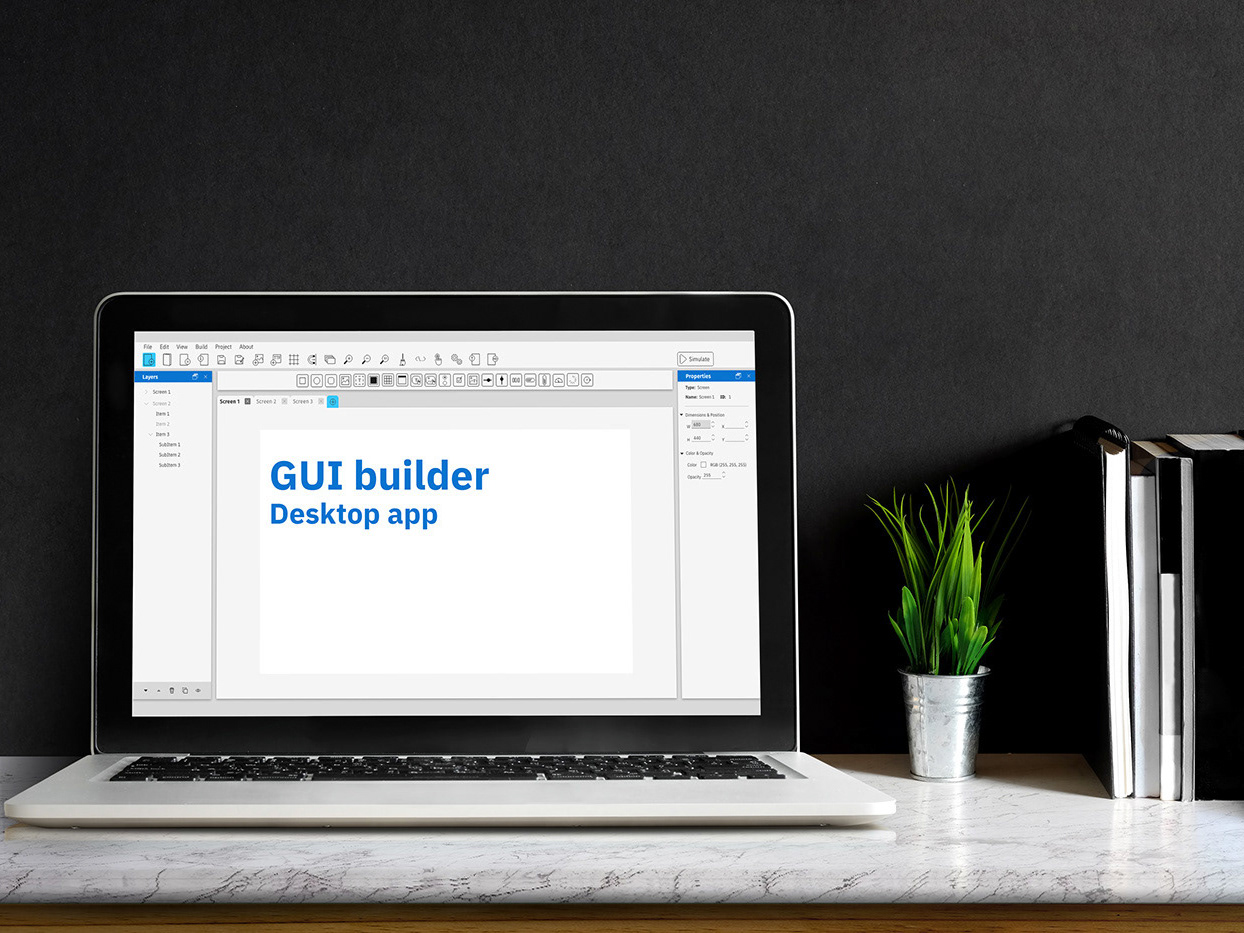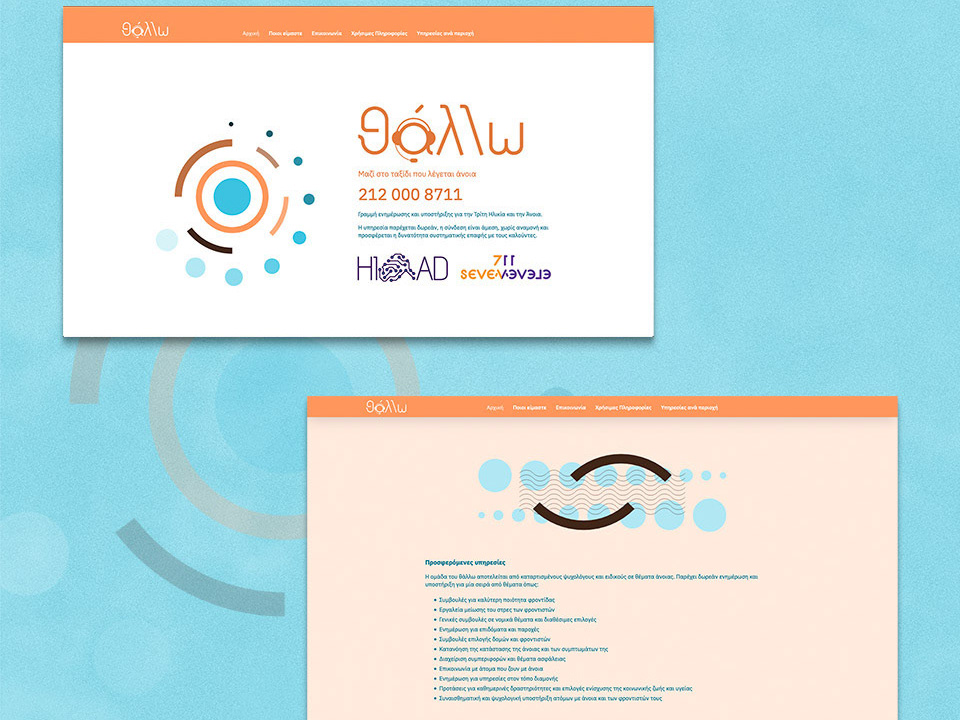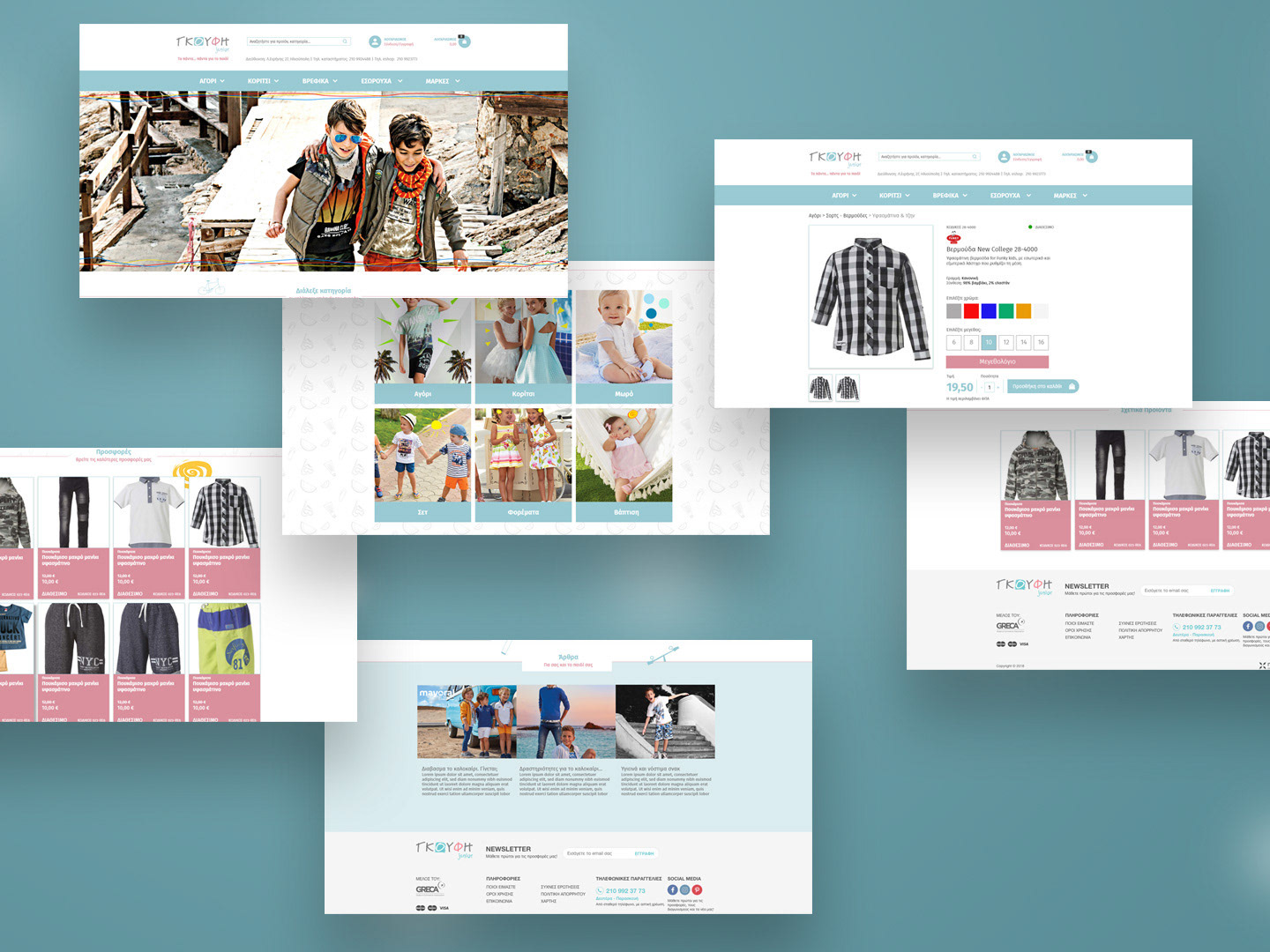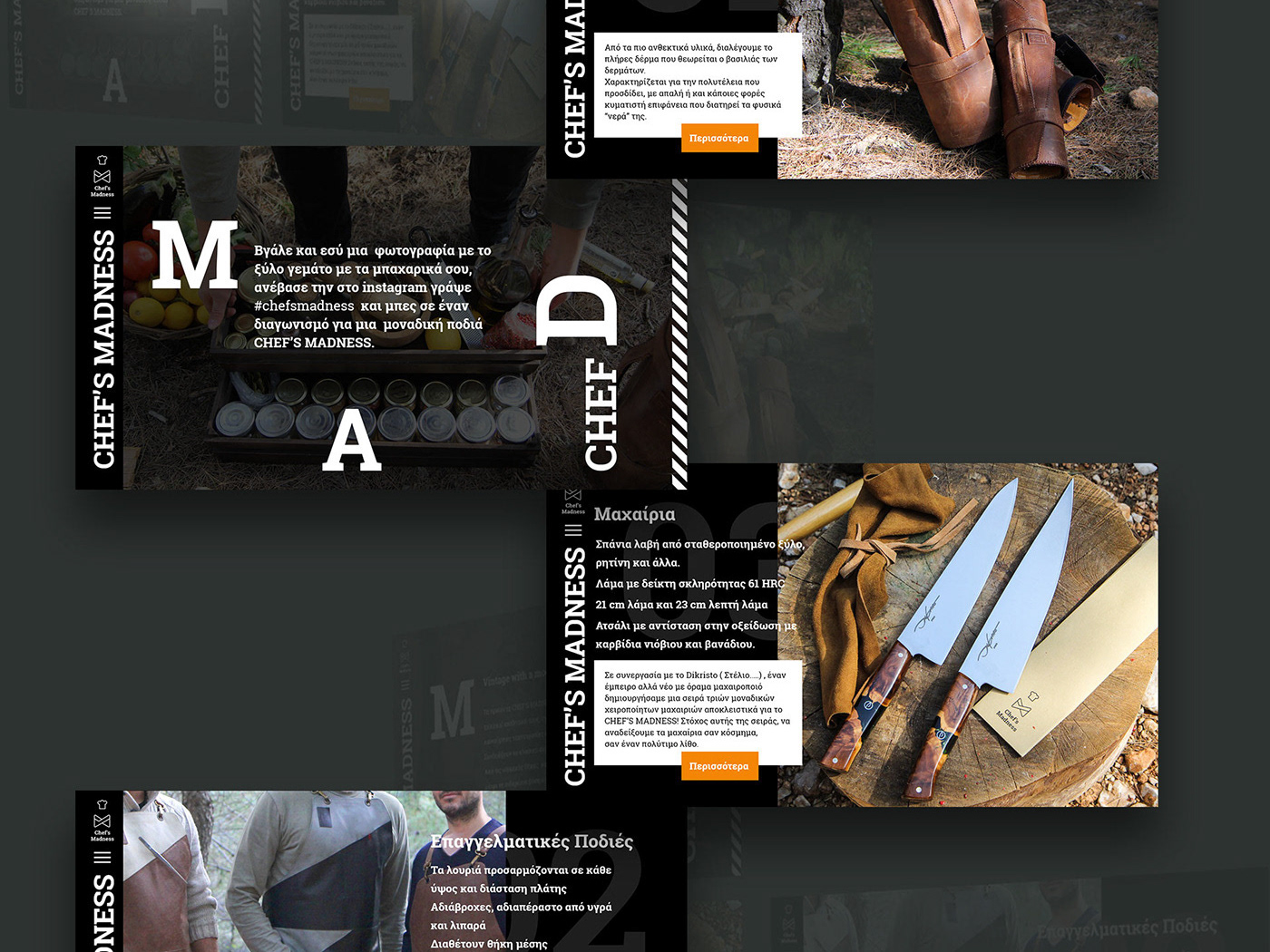TL;DR
Dimensia app is targeted to people that are caregivers of people with dementia. Here is the work I have done on the User Experience research and design. My main tools are pencil and paper, Adobe XD, Illustrator, Miro, Optimal Workshop, Google Forms. Below you can see the process I followed to create user surveys, interviews, personae, user journeys and flows, mental models, wireframes, prototypes and user tests.
Case Study
This is the presentation of the work I have done on this project that is both a real case and a student project that I designed during the Career Foundry UX Design course. The commission came from seveneleven theater company that runs the Thallo program. Thallo is funded by Stavros Niarchos foundation and is a program that offers free entertainment for people in homes for the elderly. Most of these people are People with Dementia (Pwd).
Of course, all this wouldn't be possible without Notis Paraskevopoulos and Konstantina Maltezou, the heart of Thallo program!
Special thanks goes to Tobias Treppman, my mentor on the course, and Benjamin Funk, my tutor.
I could not leave out the people that helped me with the interviews, user testing, feedback and overall possitive energy and help!
Photo: George Harissis
Problem Statement
The users of the app need a way to keep the patients alerted by learning fun facts, by doing joyful activities and also keep them self optimistic and well.
This is something that is going to make patients happy and have them exercise their cognitive capabilities and make the caretakers feel proud and satisfied for helping.
We will know this to be true when we see that the applications is a standard in their daily routine and not only something they use once or twice a week.
This is something that is going to make patients happy and have them exercise their cognitive capabilities and make the caretakers feel proud and satisfied for helping.
We will know this to be true when we see that the applications is a standard in their daily routine and not only something they use once or twice a week.
Possible solutions
An app that is structured in a way that all information is easy to reach, using a simple interface that has clear and large fonts for everyone to use.
There is going to be personilization of content using filters and the possibility to add activities and special days.
The app is going to provide song and video playlists and connection to Google Museums if there is a VR mask the users can use.
There is going to be personilization of content using filters and the possibility to add activities and special days.
The app is going to provide song and video playlists and connection to Google Museums if there is a VR mask the users can use.
Photo: George Harissis
Business Requirements
Mission Statement
There is an immense need for solutions that will help the carers take care of their loved ones and have a guide in this difficult journey.
Caregivers are, often, dealing with anger, frustration, anxiety and feelings of guilt and need any support they can get.
Caregivers are, often, dealing with anger, frustration, anxiety and feelings of guilt and need any support they can get.
Target Audience (Company hypothesis)
The target audience is anyone that has to take tare of older that suffer from a form of dementia and Alzheimer’s disease. The age demographic is from 30 years of age if we are talking about the children of the patient, up to 70 if we are talking about the spouse. In order for someone to use the app they need to have access to smartphone, tablet or computer and working knowledge of one of them.
Photo: George Harissis
Scope
A responsive web application and site.
The product itself, that includes all design and engineering and can be viewed on smartphones, tablets and computers on all platforms. The main focus is going to be smartphones that are easy to carry and view.
Activities and diagrams for each day.
Each day of the calendar has to have its own activities that people can use with the patient.
Basic knowledge on the disease.
A series of articles that explain how dementia and Alzheimer’s manifest themselves and articles for the well being of caretakers.
Marketing Plan
A marketing plan is needed so that we can let people know about the advantages of the app and how to use it. We will need some media coverage both online and offline, cooperate with doctors and health professionals that can spead the word.
Helping people
The main reason for this app is to lift the burden of the carers shoulders so that the negative feelings and the difficulties they are facing from day to day can be reduced so that they can continue leaving a close to normal life.
Photo: George Harissis
Survey
I conducted an online survey in order to learn some information about potential users of the app I am going to design.
My main goals were:
1. To identify some demographic data like age and sex.
2. To find out the relationship between caregivers and the person they are taking care of.
3. To see if they are using technology, especially smartphones and tablets.
4. I used Google forms to create the questionnaire and I posted it in two Facebook groups of caregivers of people with dementia. I received 109 responses through a time frame of a week.
Survey take away
From the survey, I found out that the vast majority of caregivers are women, between the age of 45 and 60 years old and they are taking care one of their parents. They are also very willing to use an app if it provides them with information and activities that can make their life easier.
One of the hypothesis I assumed and is being verified is that the children of the people with dementia are my main target group. This is very helpful because they are accustomed with technology and the are more likely to use an app.
With the insights I gathered I proceeded with the creation of the user personae and the user flows.
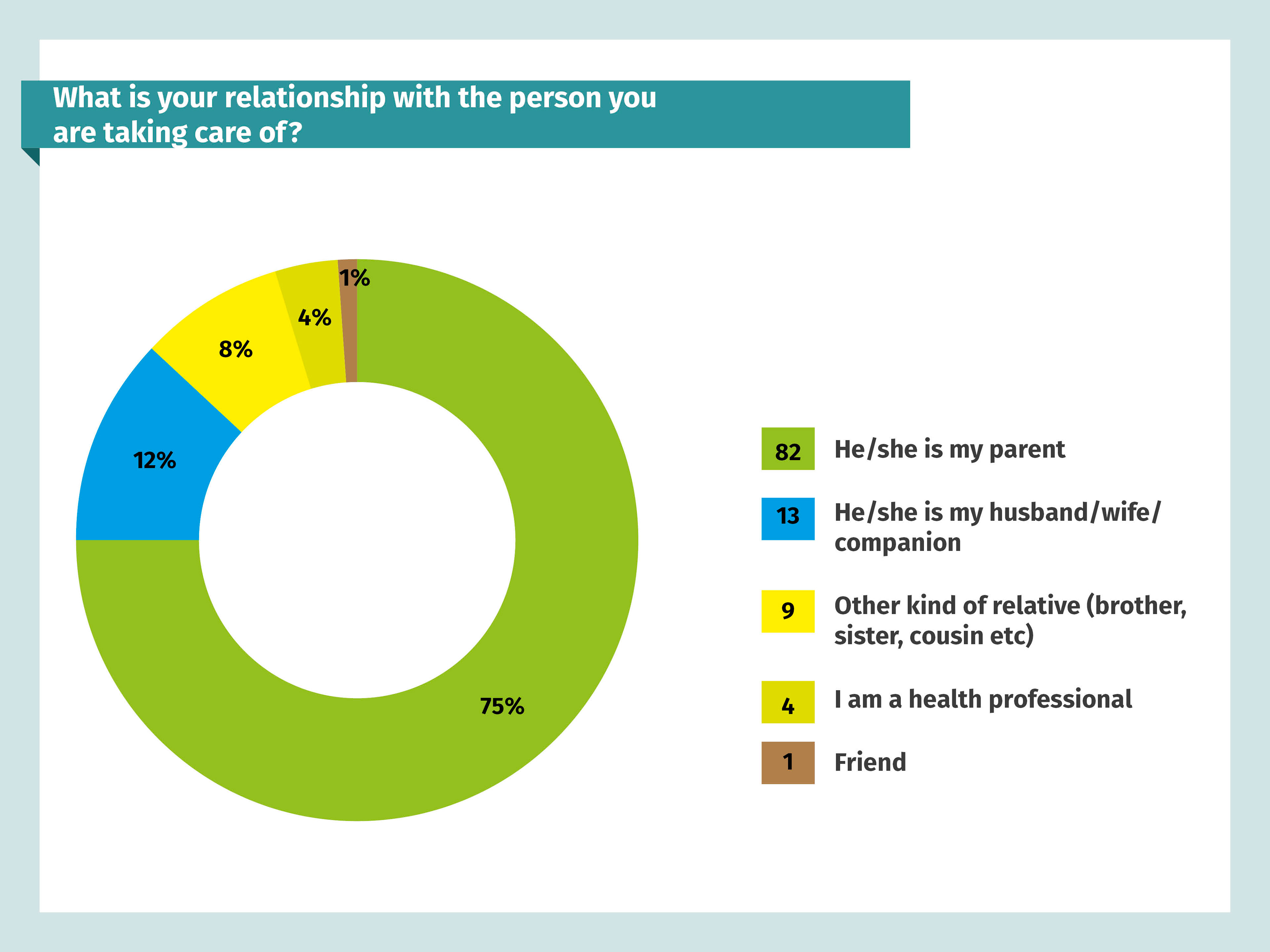


Interviews
I was able to conduct interviews with 6 people but only 3 from people that are my main target group. These interviews were conducted in person with 2 women and 1 man. All of them were recorded. The other 3 interviews, were taken from professionals that are close to caregivers but are not in the main target group. I wanted to interview them as well, because I thought that their insight is more defined and can give me some valuable information.
Interviews take away
Conducting the interviews in person helped me a lot to see what these people are going through, their everyday feelings and their needs. I believe that creating an app that will help them by giving them information about dementia but more importantly about their wellbeing is important. Also, I found out what are the best features to be included in the Minimum Viable Product and what else should be added along the way.
With the survey I gathered quantitative data from 109 people. With the interviews I gathered qualitative data that helped me understand what is important and what is not.
Affinity map
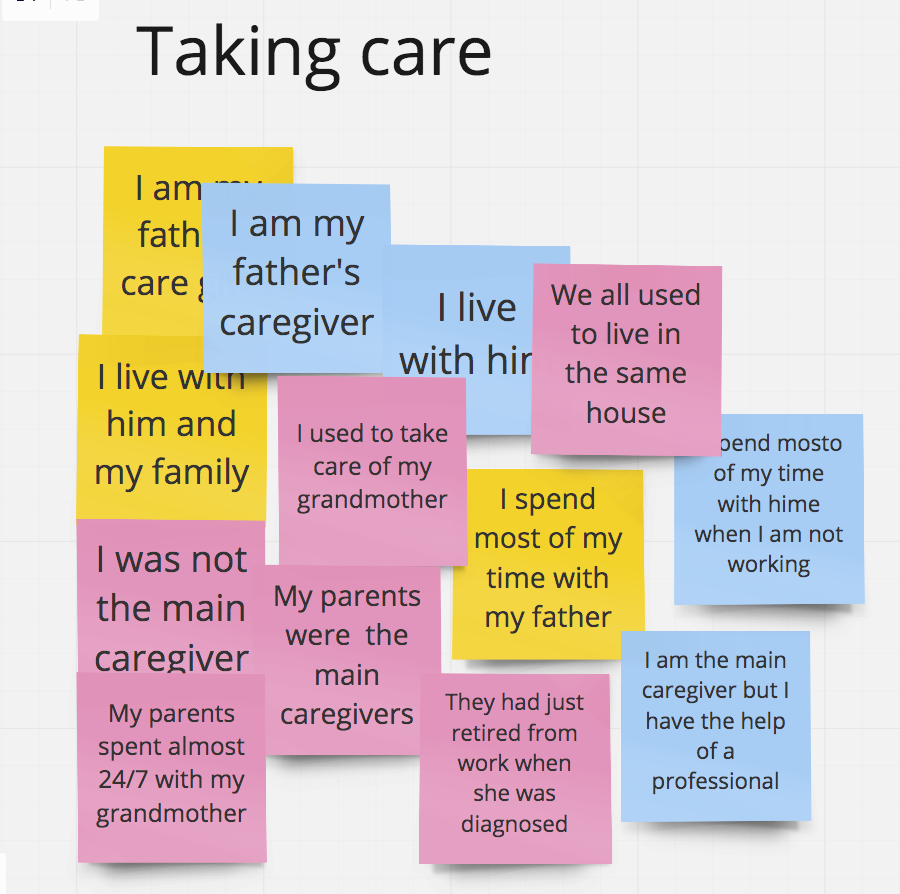

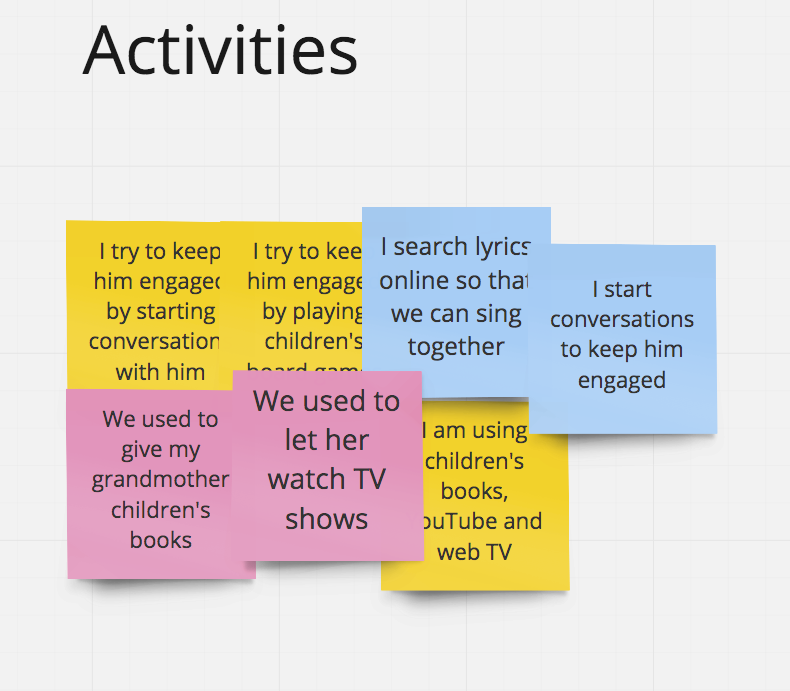

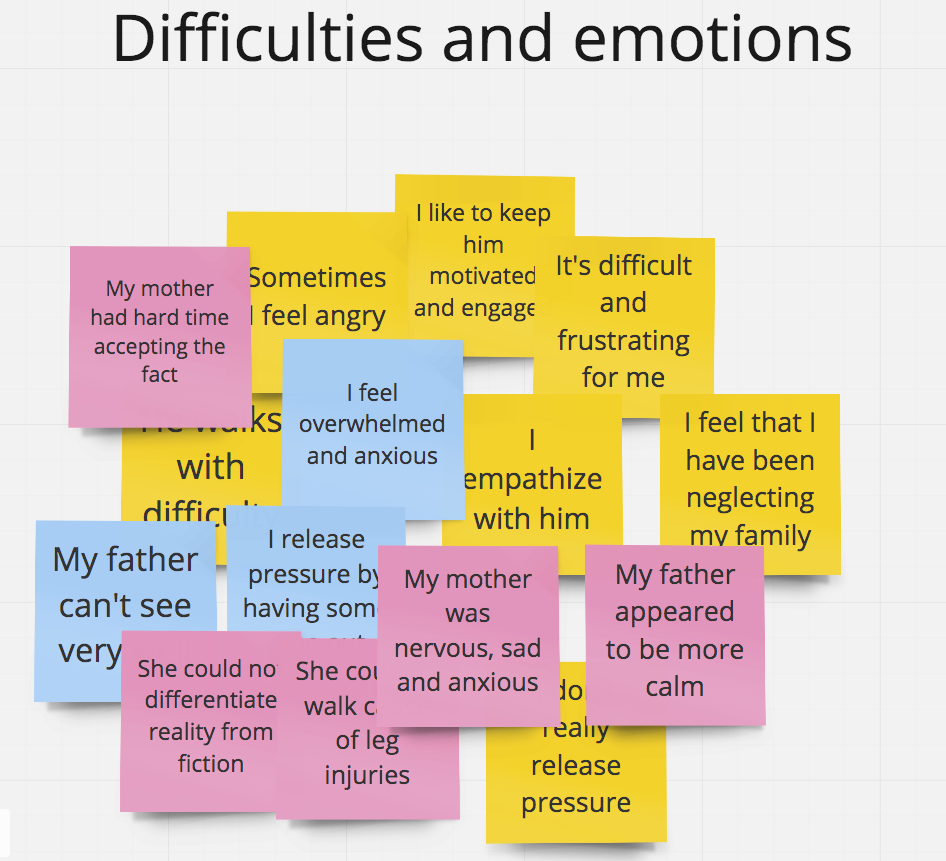
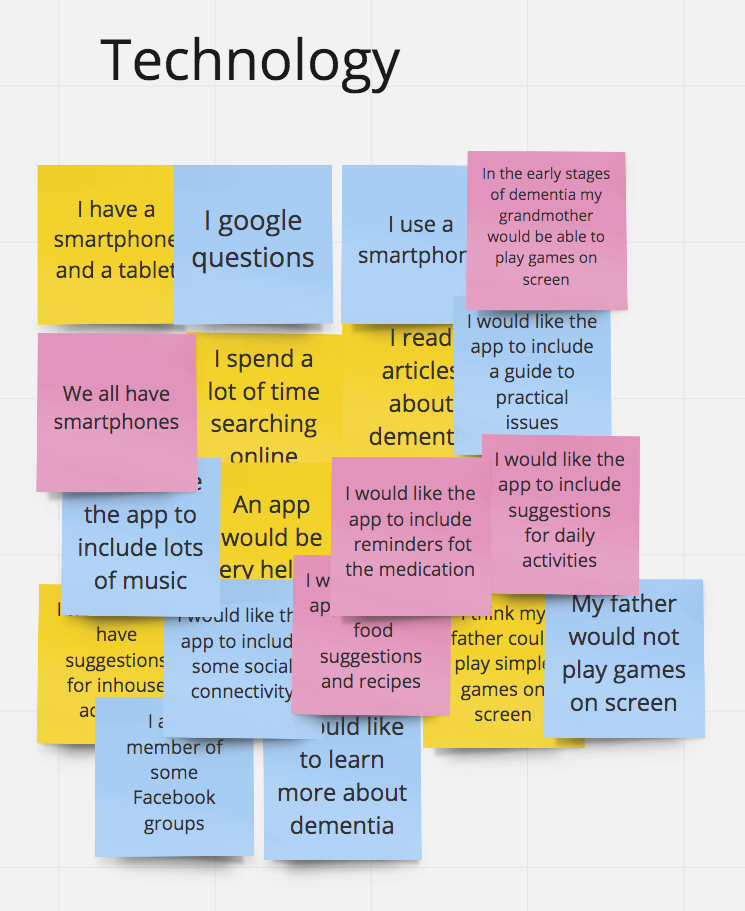
Empathy maps
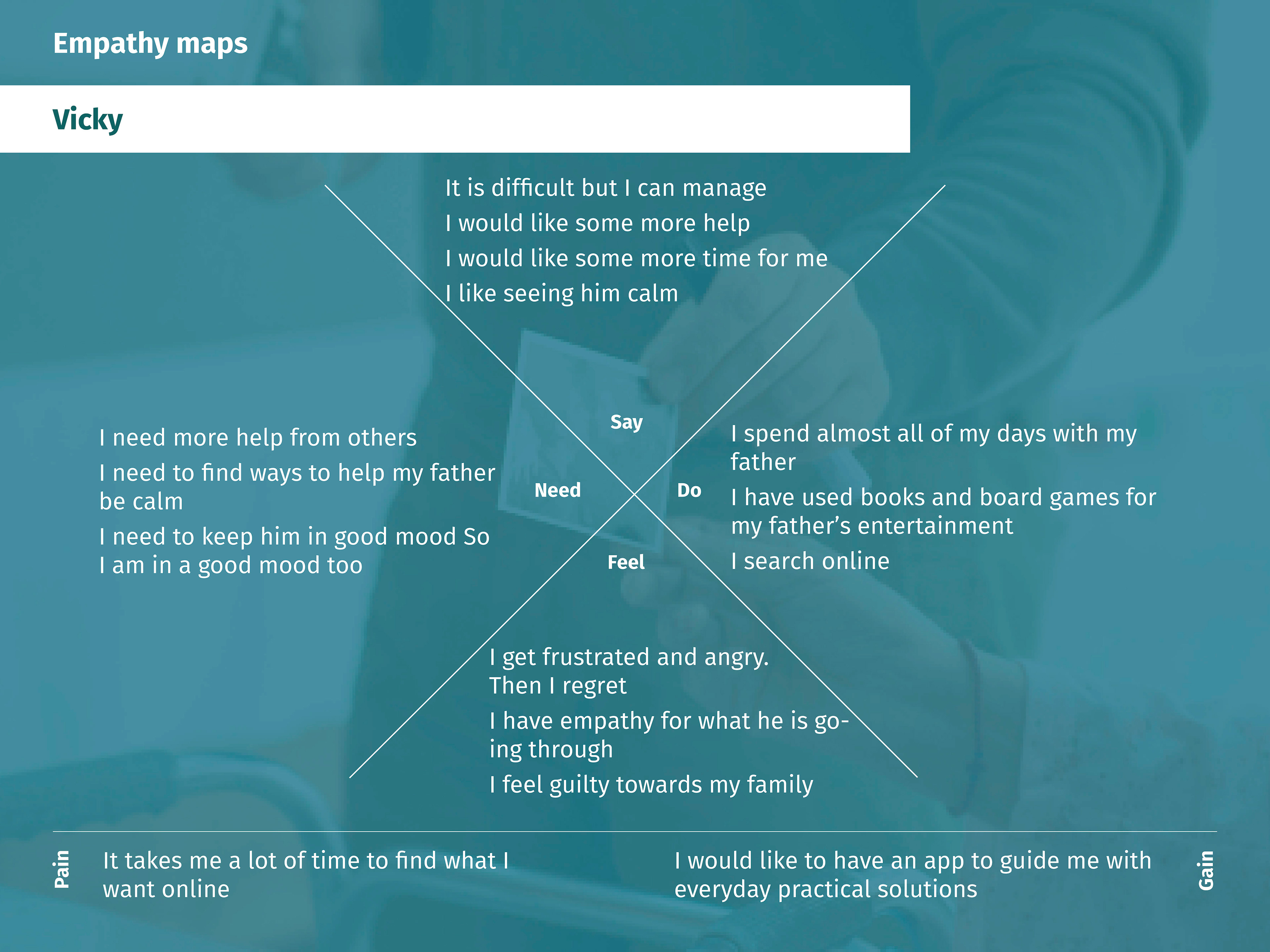
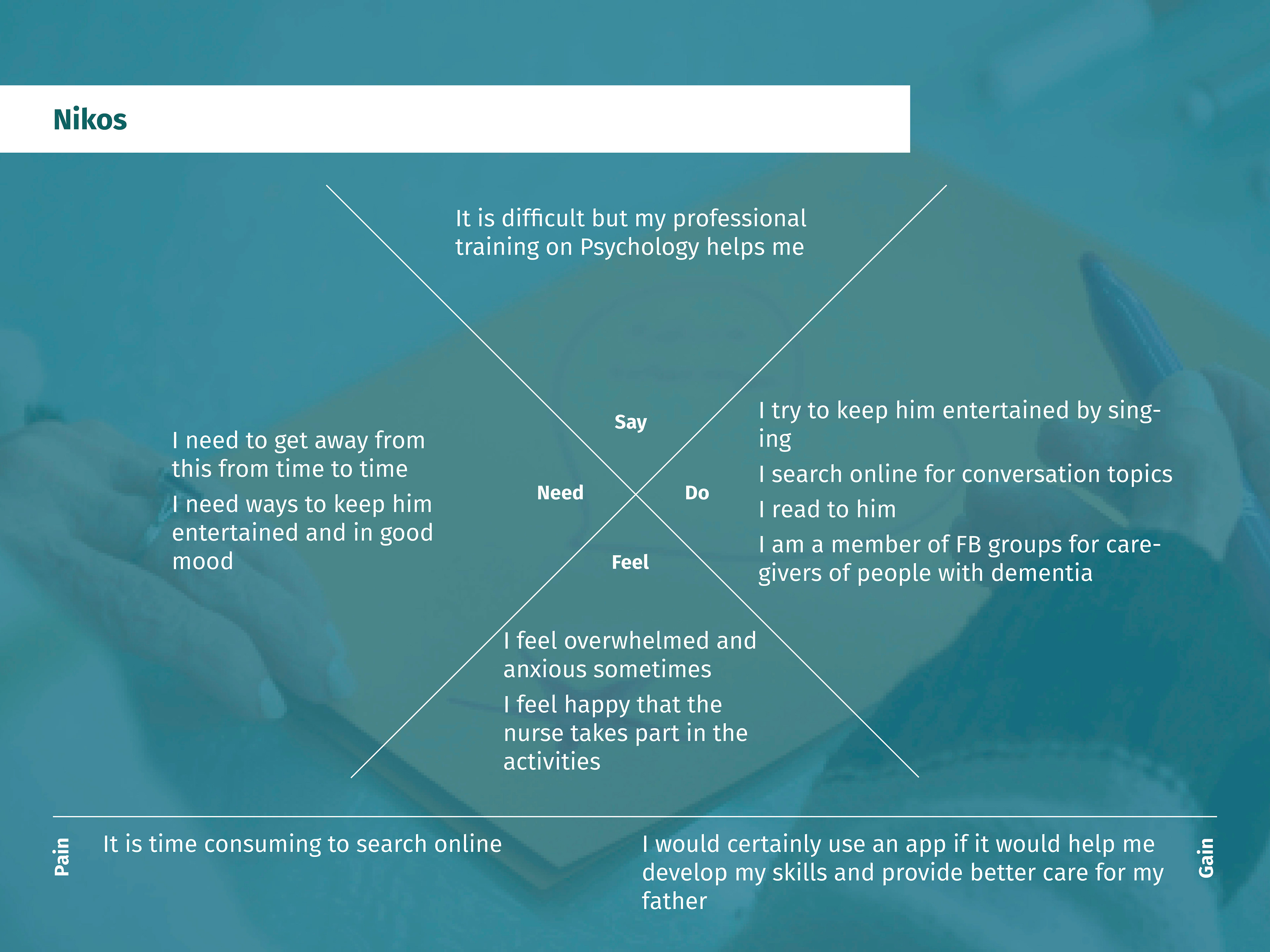

FINDINGS
Users search online to find information about dementia and how to cope with it as caregivers.
Users search online to find activities to do with the person they are taking care of.
People are trying to find topics that they can discuss with the person they are taking care of.
People use inappropriate ways to keep the person with dementia busy.
Families or people that take care of a person with dementia often have help from a health care professional that comes in the house.
Caregivers search online for music or videos.
People feel overwhelmed by the situation.
Some caregivers would appreciate discussing with others caregivers of people with dementia.
Caregivers need to be calm.
People need ways to feel adequate taking care of the person with dementia.
INSIGHTS
There is a lot of information online but not at one place.
There is a lack of info for activities that caregivers can do with the person they are taking care of.
People find it difficult to find ways to start or continue a conversation.
People need to find appropriate ways to keep the person with dementia busy.
Health care professionals could use the app also.
Caregivers would appreciate a service that could provide them with music and video.
Any help they can get is valuable.
Social interactivity is important for some caregivers.
Seeing their loved one joyful or satisfied helps them be calm.
Being informed and prepared help them achieve that.
SOLUTIONS
Including articles about dementia and the wellbeing of the caregivers in the app would help them a lot.
Activities that can be performed inside the house are a main ingredient of the app.
Providing trivia and information about things that happened in the past is a good way of starting a conversation.
Including specially designed games in the app could solve this problem.
Implementing features that could be helpful to professionals could increase users.
Including music and video clips that elders know and appreciate could help them be more relaxed.
A simple and clear layout combined with interesting context could help them be a little more calm.
Including social connectivity and bringing caregivers closer could help them.
Keeping the person with dementia active, happy and engaged could help them be calm.
Providing them with articles, trivia, activities, specially designed games, they can be trained to keep up with the situation.
Personae

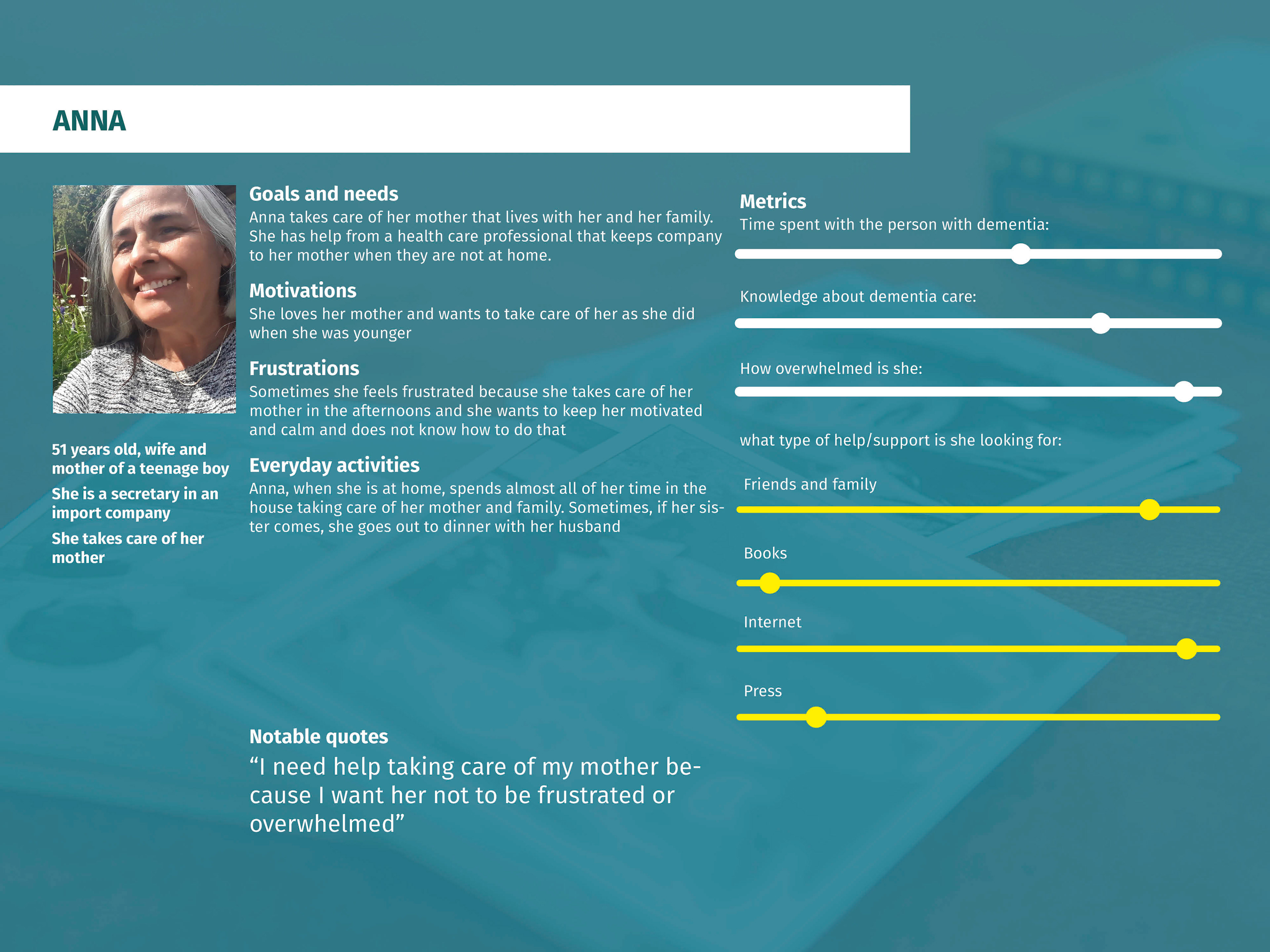
Mental models and user journeys
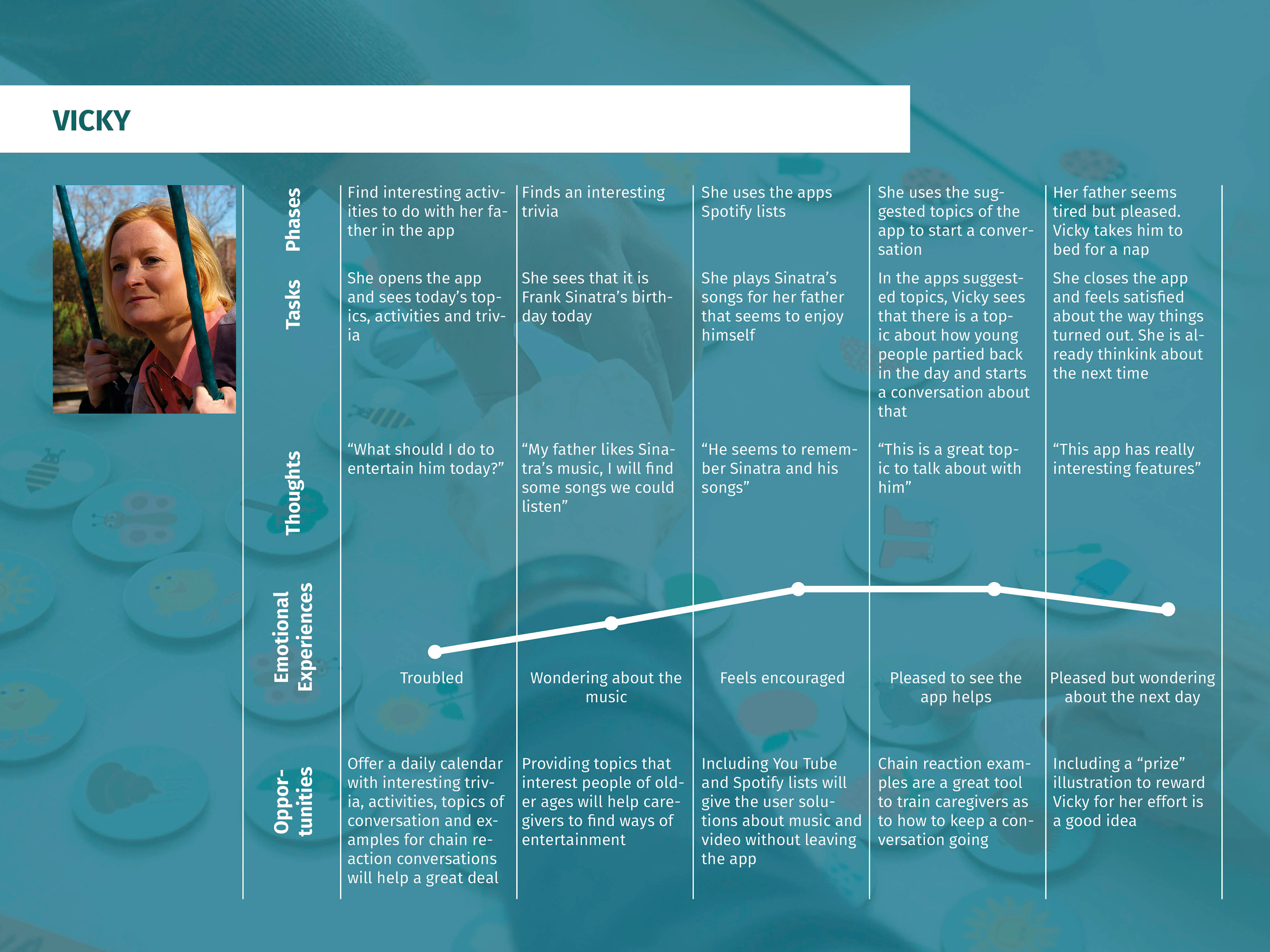
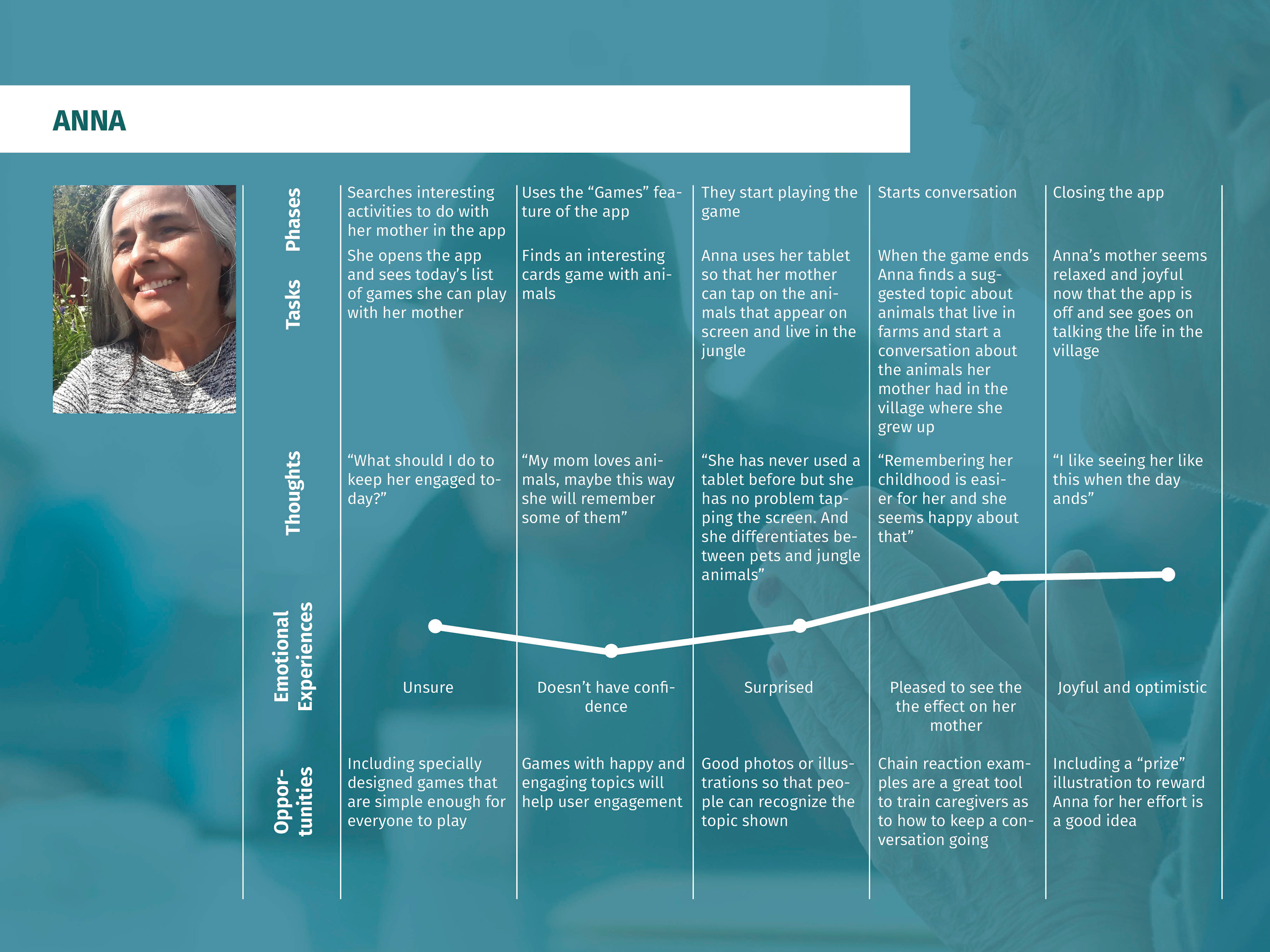
Task analysis and site map


Wireframes
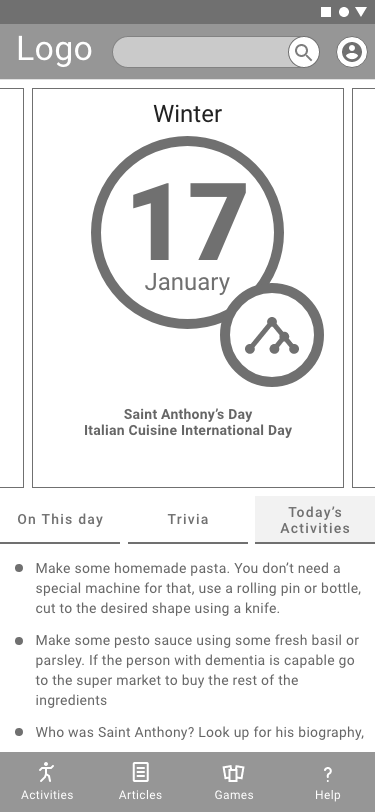
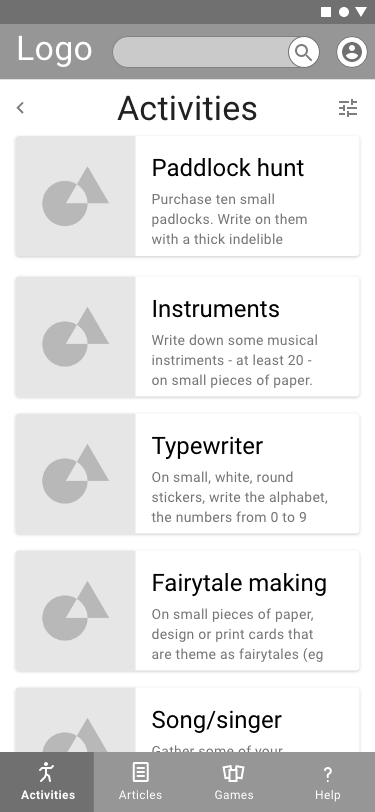


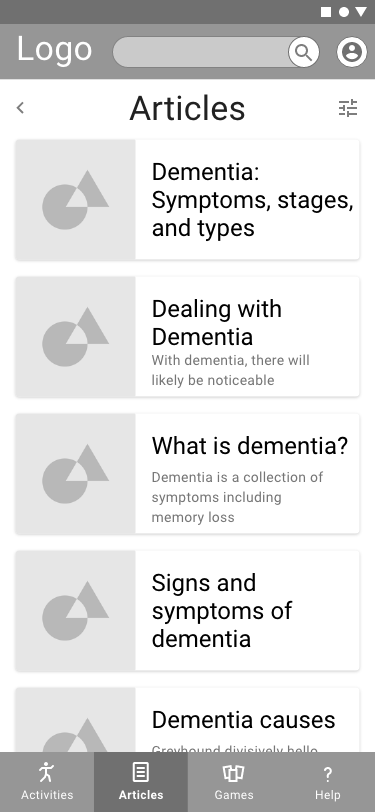
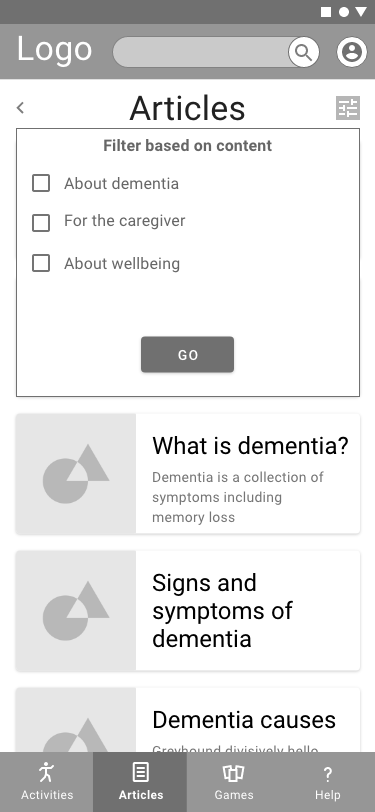
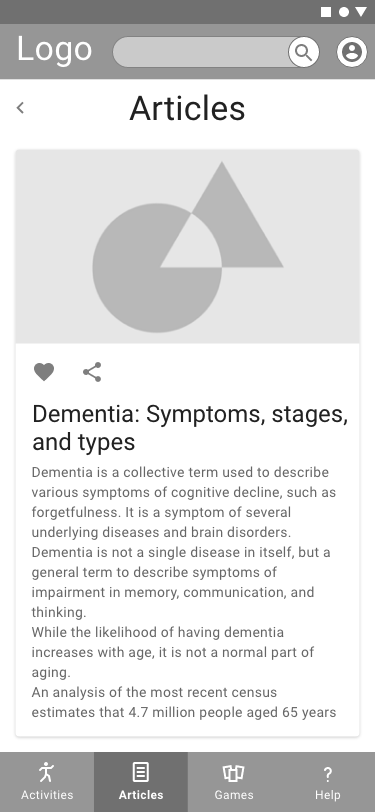
Prototype
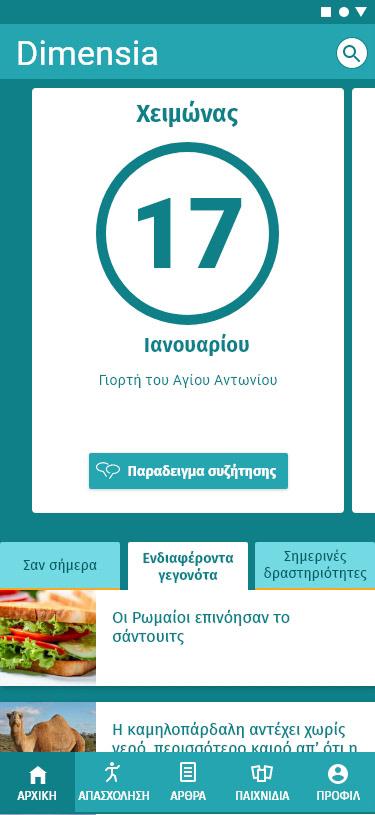
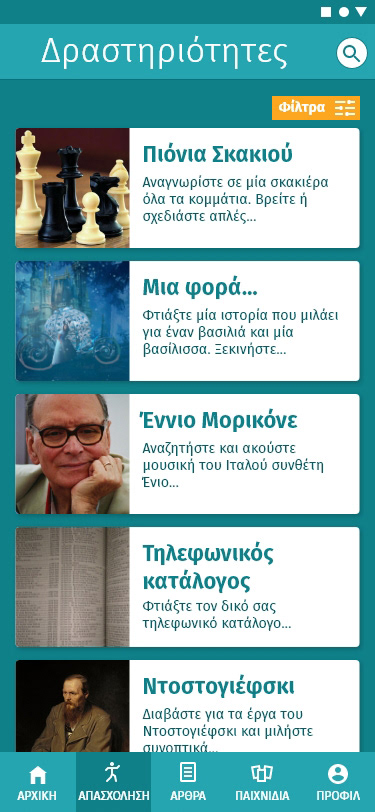
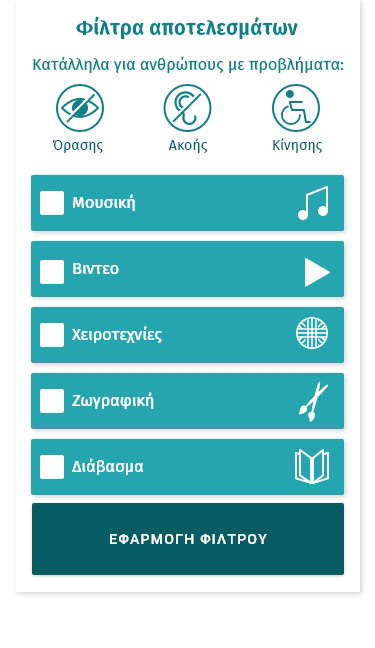
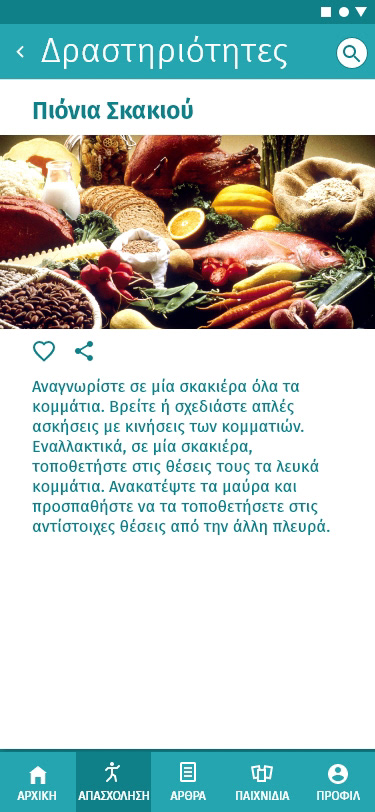


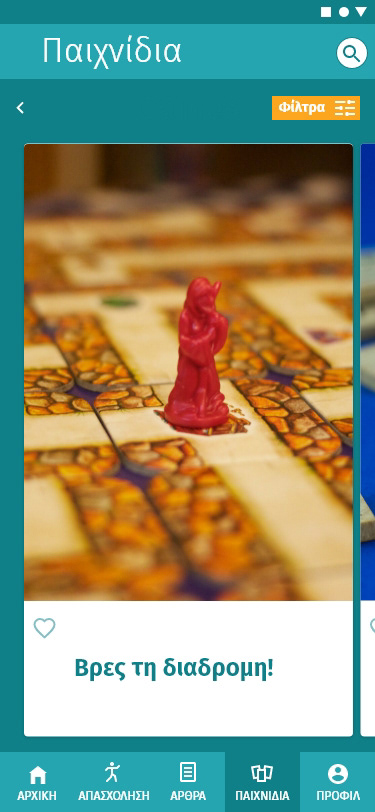
User Testing
Introduction
Dimensia app usability test
Background
I tested the app so that I would be able to see if caregivers of people with dementia are able to spend creative time with their loved ones.
The test has covered the utility, usability and information architecture of the app.
Test Objectives:
I was studying how easy it is for the users to find interesting facts, trivia and activities that are related to each day.
Also, I tested to see how easy it is for them to access articles they can read to learn about dementia and their wellbeing.
Also, I tested to see how easy it is for them to access articles they can read to learn about dementia and their wellbeing.
Activities and games are also vital because this is where they will find things that they can do with the person with dementia (PwD).
Methodology:
For this stage of testing I used 3 moderated in-person tests and 1 moderated remote test. For the next stages used moderate and unmoderated remote test.
Participants:
4 people participated in this test. They are people I can contact personally or through an acquaintance. They are all people that are or were caregivers of PwD.
Task Scenario 1
You are with the PwD you are taking care of and you want to do something fun today. Have a look at today’s calendar and find an interesting activity that you would like to do together.
Task Scenario 2
The person that you are taking care of likes to listen to music. How would you filter activities to show only the ones that include music?
Task Scenario 3
You would like the person that you are taking care of to be able to play a very easy game. Can you find a puzzle game for her?
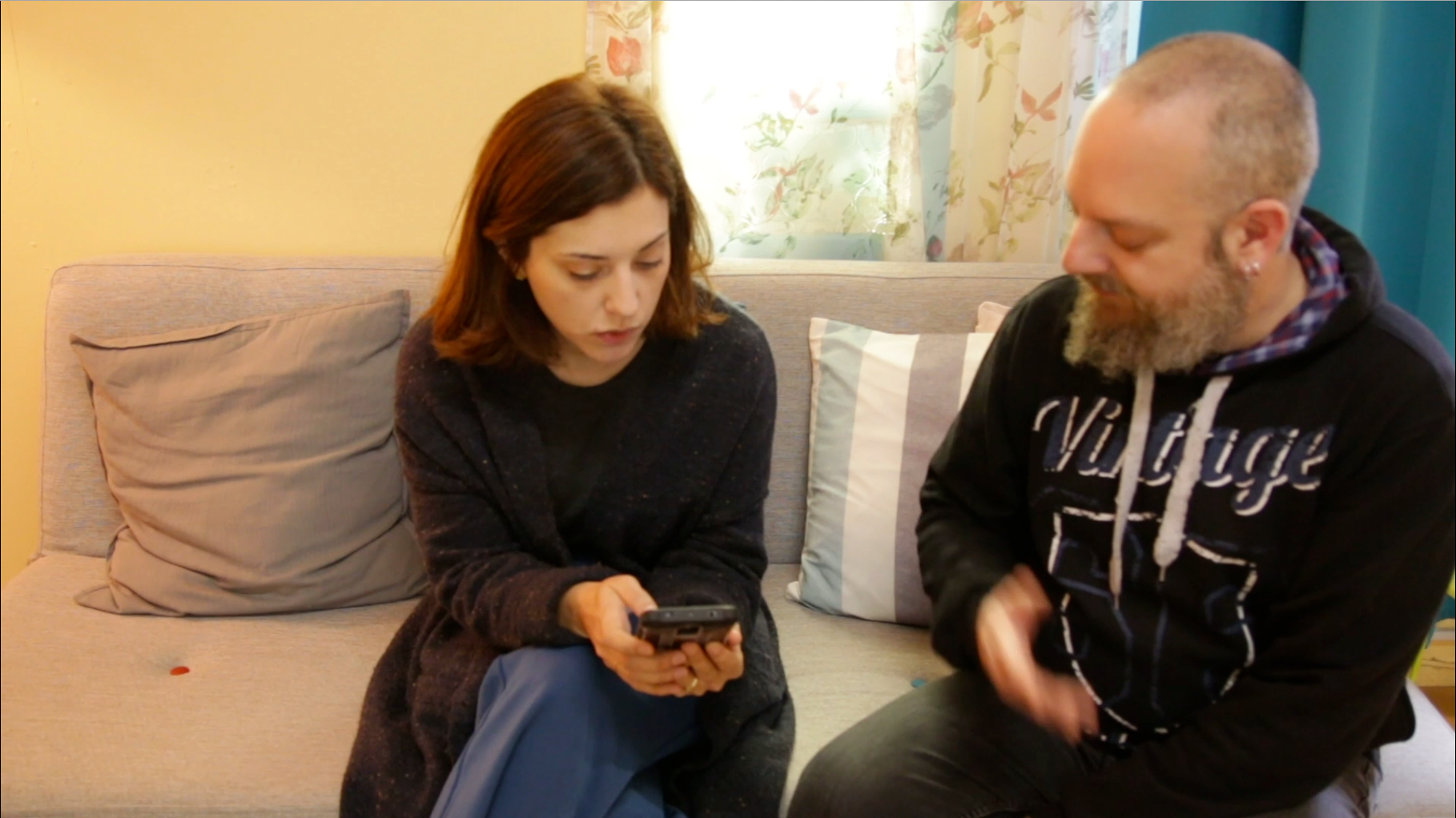


Participants
P1
Scheduled session details: Tuesday, February 13, 2020 at 14:00. Her home
Name: Konstantina
Gender: Female
Age range: 25-35
Role: Actress
Other characteristics: Strict, Experienced smartphone user but not an expert, Open / Friendly
P2
Scheduled session details: Tuesday, February 13, 2020 at 15:00. His home
Name: Panayiotis
Gender: Male
Age range: 35-45
Role: NGO founder
Other characteristics: Very open, Very experienced smartphone user, Open / Friendly
P3
Scheduled session details: Tuesday, February 13, 2020 at 18:00, via Skype
Name: Marilena
Gender: Female
Age range: 35-45
Role: Graphic designer
Other characteristics: Enthusiastic, Very experienced smartphone user and designer, Tech-savvy, Friendly and well behaved
P4
Scheduled session details: Sunday, February 16, 2020 at 12:00 Her home
Name: Nana
Gender: Female
Age range: 65+
Role: Retired
Other characteristics: Kind but not very open, Very little experience with smartphones and apps, Well spoken
Iteration 1
After the testing I went back in the prototyping phase and made some corrections based on the findings. They were not any critical issues. The most severe was the layout of the home screen which I redesigned. The results are below
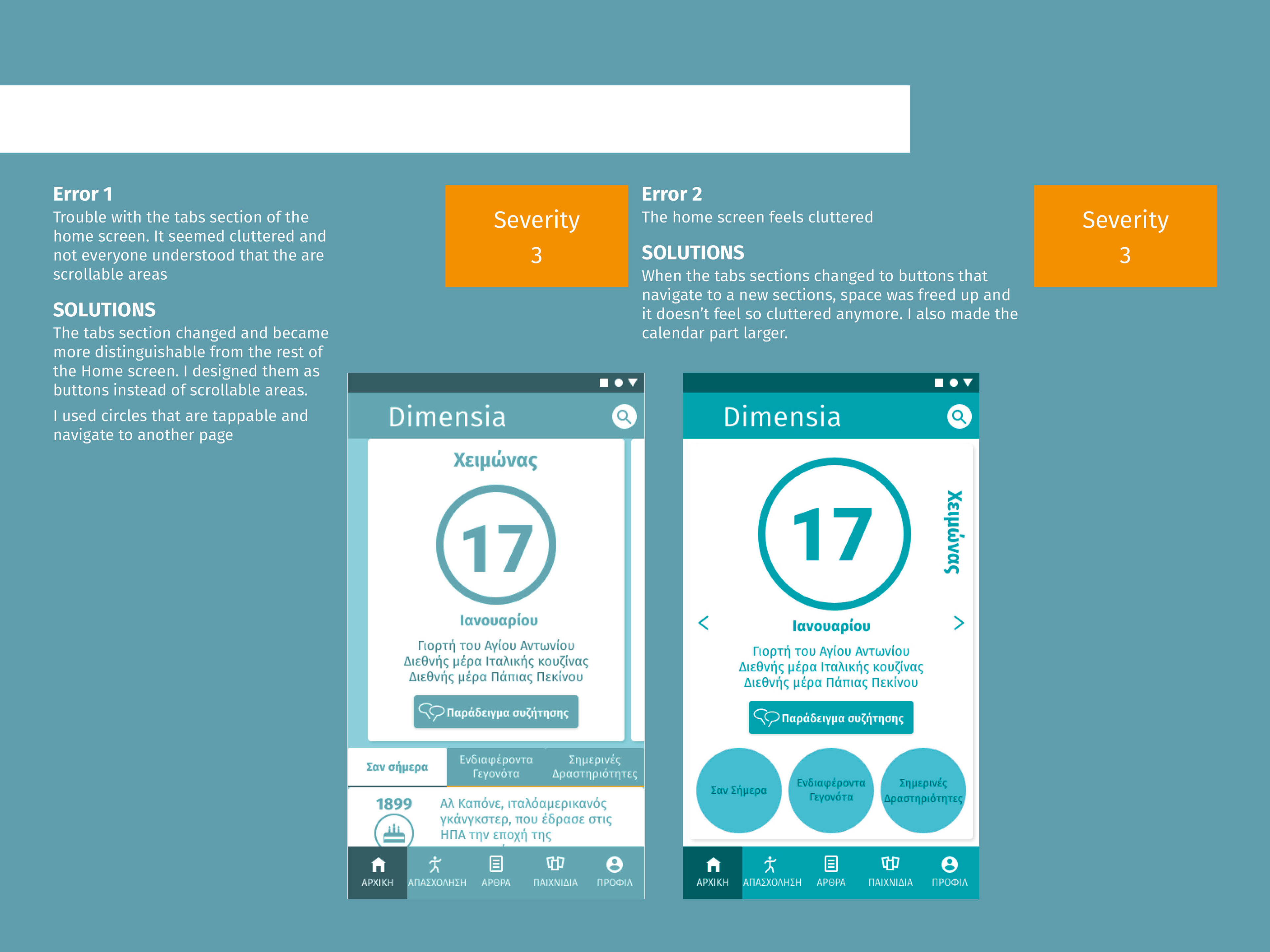
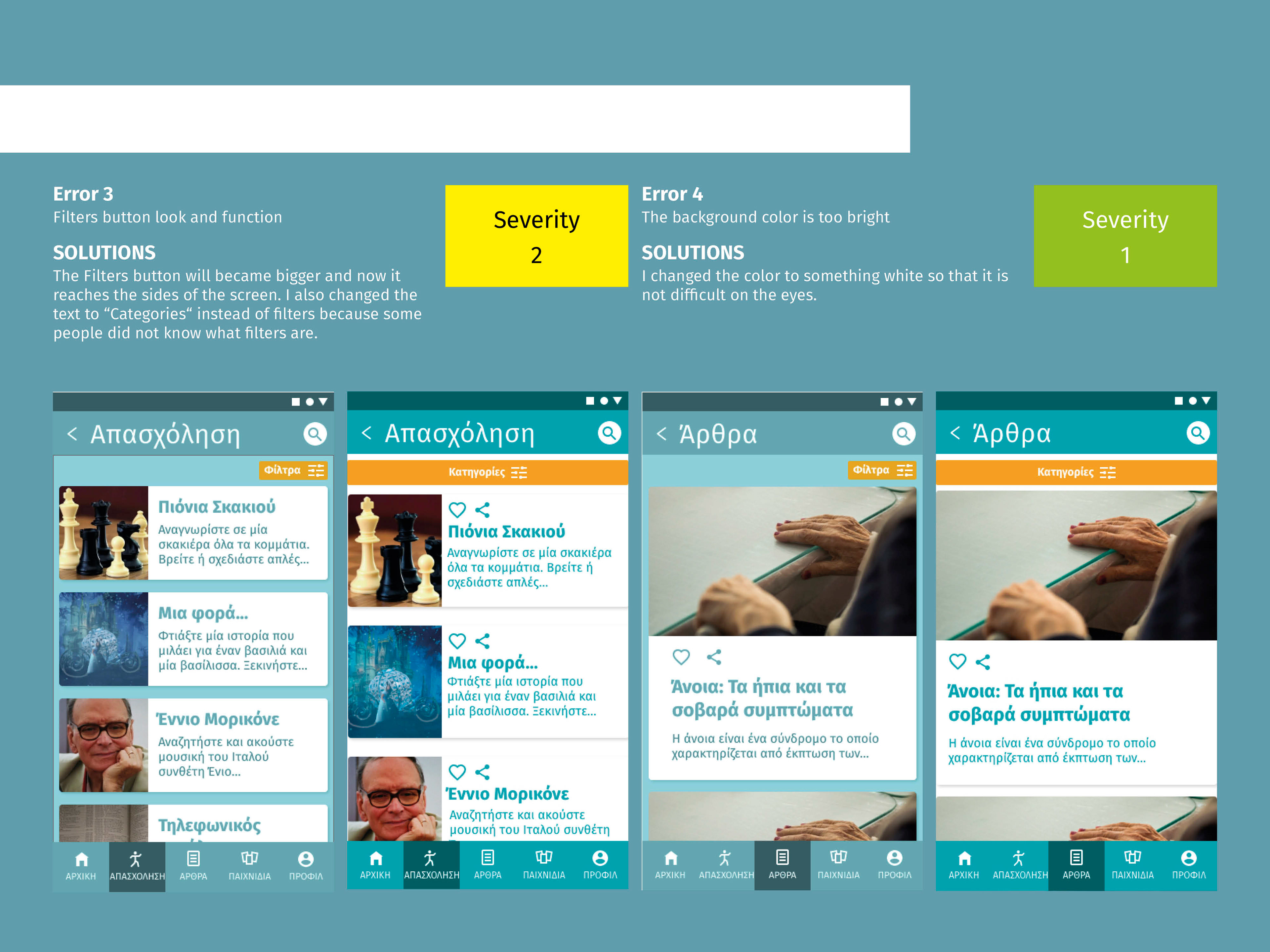

Iteration 2
After the first iterations I continued testing with various people and some of them are fellow UX designers. They pointed out some more things that needed corrections but luckily almost all of them were protype and cosmetic issues. No major navigation or usability issues.
Updated prototype:
Summary
The UX design of this app lasted about four months but it is at a final stage now. We are waiting for funding so that it can be developed and presented sometime in 2020.
I will keep testing and refining details and when it will be released I will have data so that I can plan the next moves and directions.
Thank you for reading so far down! :)


